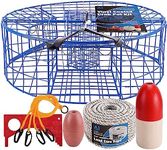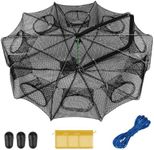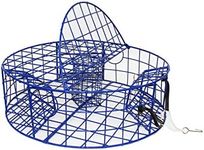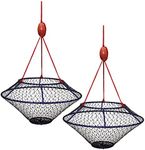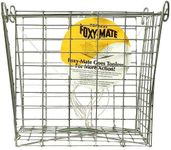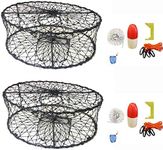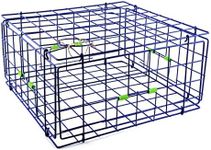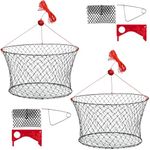Buying Guide for the Best Crab Traps
Choosing the right crab trap can make a significant difference in your crabbing success. The right trap will depend on various factors including the type of crabs you are targeting, the environment you are crabbing in, and your personal preferences. Understanding the key specifications of crab traps will help you make an informed decision and ensure you have a productive and enjoyable crabbing experience.Trap TypeThere are several types of crab traps, including box traps, ring traps, and pyramid traps. Box traps are sturdy and can hold a large number of crabs, making them ideal for serious crabbers. Ring traps are lightweight and easy to use, perfect for beginners or those who want a quick setup. Pyramid traps are a hybrid, offering a balance between ease of use and capacity. Choose a trap type based on your experience level and how many crabs you aim to catch.
MaterialCrab traps are typically made from materials like wire mesh, vinyl-coated wire, or plastic. Wire mesh traps are durable and allow for good water flow, which can attract more crabs. Vinyl-coated wire traps are resistant to rust and corrosion, making them ideal for saltwater environments. Plastic traps are lightweight and easy to handle but may not be as durable. Consider the environment you will be crabbing in and how often you plan to use the trap when choosing the material.
SizeThe size of the crab trap determines how many crabs it can hold and how easy it is to transport. Larger traps can catch more crabs but may be heavier and more cumbersome to handle. Smaller traps are easier to carry and set up but may not hold as many crabs. If you are crabbing from a boat or pier, a larger trap might be suitable. For shore crabbing or if you need to carry the trap over long distances, a smaller, more portable trap might be better.
Entrance DesignThe entrance design of a crab trap affects how easily crabs can enter and how difficult it is for them to escape. Common designs include single or multiple funnel entrances. Traps with multiple entrances can catch more crabs as they provide more entry points. However, single entrance traps can be more effective in preventing crabs from escaping. Consider the behavior of the crabs you are targeting and choose an entrance design that maximizes your catch while minimizing escapes.
Bait BoxA bait box is a compartment within the trap where you place the bait to attract crabs. The size and accessibility of the bait box can influence the trap's effectiveness. Larger bait boxes can hold more bait, which can attract crabs for a longer period. Easily accessible bait boxes make it simple to replenish bait without disturbing the trap. Choose a trap with a bait box that suits the type of bait you plan to use and how often you are willing to check and refill it.
WeightThe weight of the crab trap is important for stability and ease of use. Heavier traps are less likely to be moved by currents or waves, making them more stable in the water. However, they can be more difficult to handle and transport. Lighter traps are easier to carry and set up but may require additional weights to keep them in place. Consider the water conditions where you will be crabbing and your physical ability to handle the trap when choosing the weight.
